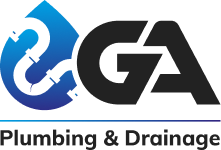Water is one of the most destructive forces when left unmanaged. From cracked foundations to soggy lawns, poor drainage can quickly turn into a costly nightmare. That’s why drainage system installation is not just a construction add-on but a necessity for long-term property health.
In this post, we’ll go beyond the basics and explore how drainage systems work, the various types available, and key considerations for installation.
Key Considerations Before Installing a Drainage System
Before you break ground, it’s essential to assess your site carefully:
- Soil Type
- Clay-heavy soil drains slowly and often needs more robust systems.
- Sandy soil drains quickly but may require reinforcement to avoid erosion.
- Slope and Grading
The natural slope of your land determines the direction of water flow. A property with poor grading (flat or sloping toward the house) requires engineered drainage solutions. - Local Regulations
Many regions have rules on where stormwater can be directed. Always check local building codes before starting. - Purpose of Drainage
- Are you preventing basement flooding?
- Protecting landscaping?
- Diverting water away from foundations?
The purpose defines the type of system required.
Types of Drainage Systems You Can Install
Here are the most commonly used systems, along with their best applications:
- French Drains
Ideal for diverting surface water and groundwater away from foundations. Installed with perforated pipes wrapped in gravel and geotextile fabric. - Surface Drainage Systems
Includes gutters, catch basins, and open channels. Effective for quickly removing heavy rainwater from large areas like driveways. - Soakaways (Dry Wells)
Used for dispersing water back into the ground, preventing pooling. A sustainable option when soil permeability allows. - Channel Drains (Trench Drains)
Long, grated drains are often used across patios, garages, or along driveways to capture runoff. - Sump Pump Systems
Installed in basements or low-lying areas to actively pump out water that collects in a sump pit.
Steps in Drainage System Installation
- Site Survey & Planning
A professional survey identifies water entry points, flow paths, and soil characteristics. - Excavation
Trenches are dug according to the drainage plan, with correct depth and slope (typically 1%–2% gradient). - Base Preparation
Gravel or aggregate bedding is laid to support pipes and improve filtration. - Pipe or Drain Placement
Perforated pipes or channels are positioned, ensuring the slope directs water toward the outlet point. - Backfilling & Covering
Trenches are filled with gravel, soil, or concrete (depending on system type). For surface drains, grates are installed. - Connection to Outlet
The system is connected to a soakaway, storm drain, or safe discharge point as per regulations.
Common Mistakes to Avoid
- Installing without a proper slope (causes water stagnation).
- Using the wrong pipe type (solid vs perforated).
- Ignoring soil permeability during planning.
- Forgetting to install geotextile fabric can lead to clogged systems.
- Overlooking maintenance access points.
Maintenance Tips After Installation
- Inspect seasonally for blockages, cracks, or collapsed pipes.
- Flush systems annually to prevent silt buildup.
- Check outlets to ensure water is discharging correctly.
- Clean catch basins regularly to avoid overflow.
Final Thoughts
A well-designed drainage system installation is an investment in your property’s safety, longevity, and value. While smaller DIY solutions may work for garden areas, larger or foundation-related drainage issues often require professional design and installation. The right system not only prevents water damage but also gives you peace of mind during heavy rainstorms.






